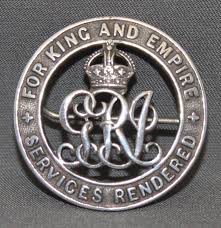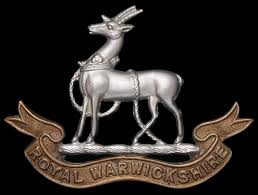Personal Details
Born: 4 May 1886 in Whitchurch, Shropshire; baptised 21 May the same year in St. Alkmund’s Parish Church.
Family: He was the second of three children born to John Cooper, a farm labourer, and his wife Mary. He married Florence Painter in Newcastle under Lyme, Staffordshire in 1910; there do not appear to be any children born to the couple.
Residence: In 1891 he was living with his parents and siblings in Megacre Lane, Audley, Newcastle Under Lyme, Staffordshire. In 1901 he was living with his maternal grandmother in Boon Hill, Audley; by 1911 he had married and was living with his mother in law at 34 Boon Hill, Bignall End, Newcastle under Lyme. The military records show him living at Mile Bank Cottages, Whitchurch, Shropshire in 1921 and by 1939 he was living at 8 Apedale Road, Newcastle-Under-Lyme.
Employment: Colliery Worker
Died: 1964 in Newcastle under Lyme, aged 78.
Military Details
Regiment: Royal Warwickshire Regiment
Rank: Second Lieutenant
Service Number:
Date of Enlistment: Not known
Date of Discharge: Not known
Reason for Discharge: Injury
Other Information:
Brother to Albert Cooper
John was awarded the Campaign Medals (British War Medal and Victory Medal) and the Silver War Badge.

The British War Medal (also known as 'Squeak') was a silver or bronze medal awarded to officers and men of the British and Imperial Forces who either entered a theatre of war or entered service overseas between 5th August 1914 and 11th November 1918 inclusive. This was later extended to services in Russia, Siberia and some other areas in 1919 and 1920. Approximately 6.5 million British War Medals were issued. Approximately 6.4 million of these were the silver versions of this medal. Around 110,000 of a bronze version were issued mainly to Chinese, Maltese and Indian Labour Corps. The front (obv or obverse) of the medal depicts the head of George V. The recipient's service number, rank, name and unit was impressed on the rim.
The Allied Victory Medal (also known as 'Wilfred') was issued by each of the allies. It was decided that each of the allies should each issue their own bronze victory medal with a similar design, similar equivalent wording and identical ribbon. The British medal was designed by W. McMillan. The front depicts a winged classical figure representing victory. Approximately 5.7 million victory medals were issued. Interestingly, eligibility for this medal was more restrictive and not everyone who received the British War Medal ('Squeak') also received the Victory Medal ('Wilfred'). However, in general, all recipients of 'Wilfred' also received 'Squeak' and all recipients of The 1914 Star or The 1914/1915 Star (also known as 'Pip') also received both 'Squeak' and 'Wilfred'. The recipient's service number, rank, name and unit was impressed on the rim.

The Silver War Badge was issued in the United Kingdom and the British Empire to service personnel who had been honourably discharged due to wounds or sickness from military service in World War I. The badge, sometimes known as the "Discharge Badge", the "Wound Badge" or "Services Rendered Badge", was first issued in September 1916, along with an official certificate of entitlement.

